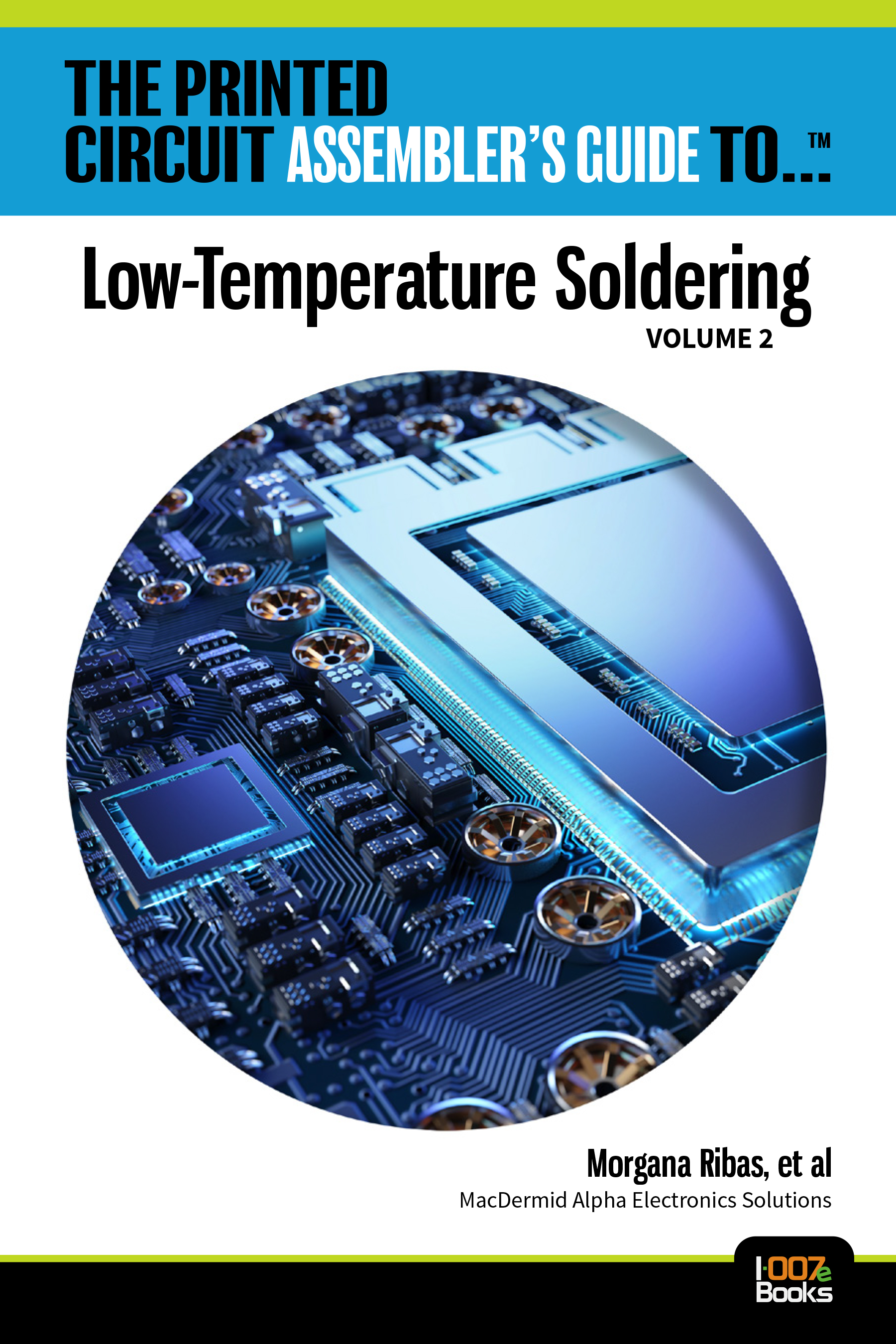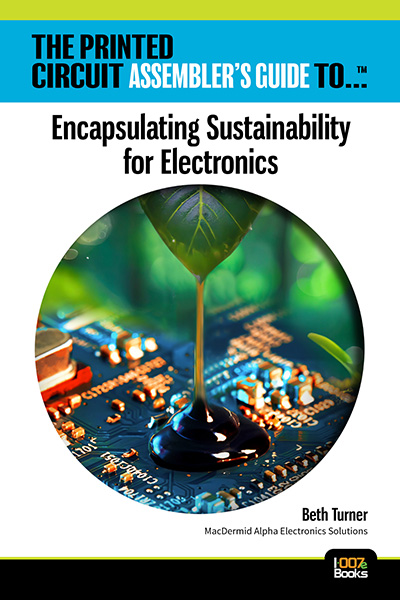-

- News
- Books
Featured Books
- pcb007 Magazine
Latest Issues
Current Issue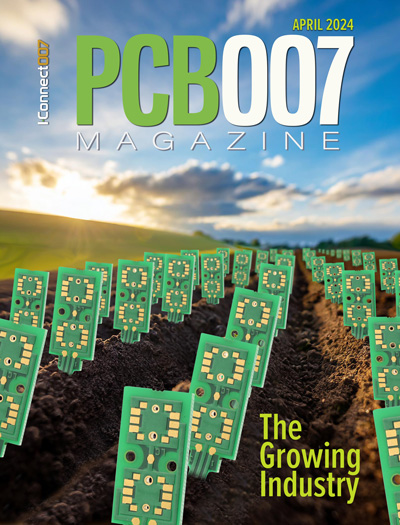
The Growing Industry
In this issue of PCB007 Magazine, we talk with leading economic experts, advocacy specialists in Washington, D.C., and PCB company leadership to get a well-rounded picture of what’s happening in the industry today. Don’t miss it.
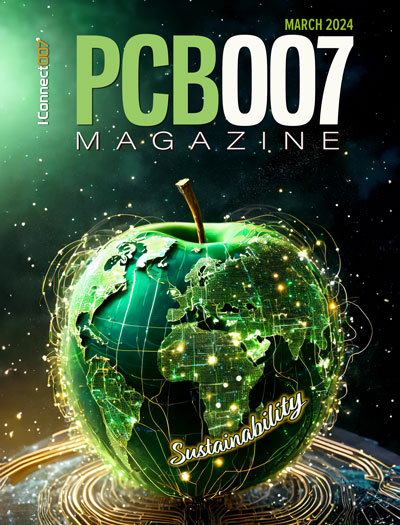
The Sustainability Issue
Sustainability is one of the most widely used terms in business today, especially for electronics and manufacturing but what does it mean to you? We explore the environmental, business, and economic impacts.
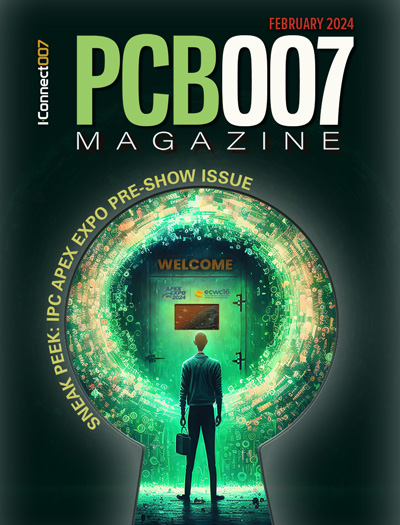
The Fabricator’s Guide to IPC APEX EXPO
This issue previews many of the important events taking place at this year's show and highlights some changes and opportunities. So, buckle up. We are counting down to IPC APEX EXPO 2024.
- Articles
Article Highlights
- Columns
Search Console
- Links
- Events
||| MENU - pcb007 Magazine
Latest Articles
FIRST Program Inspires Next Generation of Innovators
Today’s students grow up immersed in a world of technology, yet how many of them actually see themselves taking on careers that advance this science? Since many of the jobs for our future workforce haven’t even been created yet, what can be done to encourage students toward STEM careers? In this interview, Barry Matties speaks with Adrienne Collins, director of programs at FIRST Washington, about the success of a student robotics program that fosters innovation, builds problem solving skills, and cultivates a concept that most of us have never heard of—gracious professionalism. When you see the interplay of these skills in action, you are blown away. There’s a bright future ahead.
I-Connect007 Editor’s Choice: Five Must-Reads for the Week
It’s been a busy week in this industry, and we have news and articles from the PCB design, fabrication, and assembly communities. The roller coaster ride continues, with whiplash-inducing news from IPC about March North American shipment—they’re up from February but down from the same period a year ago.
Catching up with EISO Enterprises’ President Gary Chien
While there are many Chinese companies now selling in the United States, I wanted to find one in Taiwan that is penetrating the U.S. market. I was delighted to come across EISO Enterprise Co. Ltd., a printed circuit board fabricator located in Taiwan. I know that the American companies are usually looking for PCB global partners in countries other than China, which made my conversation with Gary (Jung Kun) Chien all the more interesting, especially when he shared his thoughts on the U.S-China trade wars.
Training the Future Manufacturing Labor Force
To better understand what’s needed for upskilling your labor force in today’s job climate, we reached out to Sunstone Circuits, a PCB fabricator in the Pacific Northwest. We posed our set of questions to individuals in three departments to hear their perspectives depending on what area they work in. The following are the questions and answers from Michael Connella, operations manager; Matt Stevenson, vice president of sales and marketing; and Debra Coburn, human resources manager.
I-Connect007 Editor’s Choice: Five Must-Reads for the Week
Welcome to April 15, everyone! There are reasons we tend to cover topics in a continuous conversation. First, there are always developments and news in the industry. Second, you dear readers respond to that content by reading it. This week the news items that drew the most reader interest verify that our industry has ongoing interest in government involvement in industry infrastructure, supply chain issues, cybersecurity, and new technologies like additive in fabrication.
The Carbon Footprint of HDI: Direct Metallization vs. Electroless Copper
As the electronics supply chain contends with the struggles of moving out of the pandemic and into a new normal, it is increasingly obvious that a new normal will be one with sustainability and resource conservation as the top priority. Over the past year, we have seen printed circuit board manufacturers encounter challenges associated with environmental regulations, water and power outages, and pressures from the supply chain to reduce environmental footprints. From the perspective of a board fabricator, especially one that specializes in HDI, a highly resource-intensive step in the process of making a printed circuit board is the primary metallization step. All circuit boards that have multiple layers go through such a primary metallization, which is either electroless copper or direct metallization (DM).
Material Application for Mini Backlight Unit
In 1980, about 90% of the materials used to make PCBs was FR-4. As time went by, technology developed, and electronic devices relentlessly integrated into every area of our lives. The constant acceleration of upgrading meant endless challenges and opportunities for CCL suppliers. Wazam New Material Co. Ltd. is a CCL supplier that strives to be attentive to the needs of its end customers and provide comprehensive solutions. One example is the mini backlight unity (MBLU) application material.
Engineering RF Dielectric Material to Enable 5G/6G Antenna Devices
Accurate characterization of frequency-dependent inhomogeneous dielectric material properties is key to the optimal design of high performance and cost-effective PCB antennas. These antennas will be required to enable the plethora of devices forecasted for 5G/6G communication. Therefore IT-88GMW, an advanced resin system reinforced with tightly woven thin glass fibers has been formulated to improve the Q-factor of interconnects and passive components fabricated on PCB laminates.
Uncovering the Electronics Ecosystem
Nolan Johnson speaks with Will Marsh, vice president of TTM Technologies and president of the Printed Circuit Board Association of America, about the work the PCBAA has been doing in Washington, D.C., to get the industry better recognized by the country’s decision-makers. Marsh is optimistic, not only about the companies and individuals joining the effort, but in the recognition by Capitol Hill to secure the nation’s defense systems.
I-Connect007 Editor’s Choice: Five Must-Reads for the Week
Spring has definitely sprung, and the trade show season continues to roll right along. Managing Editor Nolan Johnson just returned from DesignCon 2022, and as he says in his review, the attendance was up from last year’s event, which had been at the McEnery Convention Center in the waning days of the pandemic. I hope we’re getting back to normal, whatever that means. This week, we have a few articles about Industry 4.0, as well as a column on setting your priorities. We have a cool article about methods for measuring the breakdown of resins during multiple thermal laminations, and a conversation with an EMS company president who realized that he was actually running a data collection firm that happened to make circuit boards. Can you say the same about your own company?
Catching Up With Alpha Circuit’s Prashant Patel
There is plenty of evidence that the American PCB industry is going through a revitalization. While a few new companies are being established, others are being rejuvenated as investors gain more interest and confidence in domestic PCB companies. I reached out to Prashant Patel, owner and president of Alpha Circuit I LLC in the greater Chicago area. I wanted to hear about his investment and the unique path he took to owning a PCB shop.
Measuring Multiple Lamination Reliability for Low-loss Materials
Taiwan Union Technology Corporation (TUC) provides copper-clad laminates and dielectric resin composites used to manufacture printed circuit boards. The enthalpy of these resin composites meets and exceeds customers’ objectives and shows the deterioration of the resin’s physical properties as a result of multiple lamination cycles (up to 10X). This article describes how TUC evaluates the possible change in resin structure due to multi-thermal laminations.
I-Connect007 Editor’s Choice: Five Must-Reads for the Week
According to a quick look at history.com, “Some historians speculate that April Fools’ Day dates back to 1582, when France switched from the Julian calendar to the Gregorian calendar. In the Julian Calendar, as in the Hindu calendar, the new year began with the spring equinox around April 1.” All well and good, but why April Fools’? “People who were slow to get the news or failed to recognize that the start of the new year had moved to January 1 and continued to celebrate it during the last week of March through April 1 became the butt of jokes and hoaxes and were called “April fools.”
Improved Thermal Interface Materials For Cooling High-Power Electronics
Heat has been a significant concern in electronics since the beginning of the electronics age when hot glowing vacuum tubes were first used to receive and transmit data bits. The transistor and integrated circuit effectively solved that basic problem, but increases in integration resulted in increased concentration of heat, exacerbated by relentless increases in operating frequency. While improvements in electronics technology have been able to mitigate many thermal issues at chip level thanks to improved semiconductor designs devised to operate at lower voltages (thus requiring less energy) the thermal management challenge continues to vex electronic product developers.
EIPC Technical Snapshot: High-end PCB Market Requirements and Technology Trends
The European Institute for the PCB Community (EIPC) continues to provide an efficient platform for following and pursuing new developments. Its Technical Snapshot webinar has become established as a must-attend monthly event, and consistently delivers essential information of the highest calibre and relevance. The 16th in the series on March 23 focused on market requirements and technology trends at the high end of the PCB and semiconductor packaging industries, with two eminent speakers.
Developments in Low-Loss Substrates for High-Frequency Applications
The electronics industry as we know it today can trace its birth to the creation of the first integrated circuit in 1958, although conception occurred 10 years earlier with the invention of the transistor. That first IC contained a single transistor and four passive components. To say things have come a long way since then is a huge understatement.
Thank You to the I-Connect007 Team
During IPC APEX EXPO, the I-Connect007 team works very hard to bring you several great interviews that will keep you up to date on the latest industry activity. This year, we had Nolan Johnson, Andy Shaughnessy, Pete Starkey, and Happy Holden of I-Connect007 in front of the cameras. We also send out a very special thank you to our guest interviewers, who sat in the I-Connect007 show floor studio to conduct many interviews. The list includes Tara Dunn, Dick Crowe, Joe Fjelstad, Steve Williams, and Kelly Dack. Their contributions are greatly appreciated.
I-Connect007 Editor’s Choice: Five Must-Reads for the Week
It’s been a crazy week, with lots of bad news coming out of Ukraine. (I’m a news junkie by trade, but I confess that some days I just unplug from the news completely to avoid overdosing on negativity.) And, as you might have guessed, this is all having ill effects on our electronics supply chain, which is already stretched thin. This is reflected in our IPC news item that shows an uptick in PCB sales in February, but a drop in bookings YOY, in part due to the trouble in Eastern Europe. But there’s positive news in this week’s top reads. We have a NextFlex article about an innovative flexible technology called flexible hybrid electronics (FHE) and a great interview by Dan Beaulieu. We also have a column by Travis Kelly, who discusses PCBAA’s efforts to lobby for American manufacturing in Washington. And last but not least, let’s welcome our two newest columnists, Paige Fiet and Hannah Nelson, who discuss their excitement about entering this industry.
An Inside Look at an Indian PCB Manufacturer
As a student of the printed circuit board industry, I am always interested in learning more about companies all over the world. When I connected with Abhay Doshi, managing director of Fine-Line Circuits Ltd. in India, I welcomed the opportunity to learn more about him, his company, and the Indian PCB business as a whole—it was all that, and so much more. Here’s what I learned.
DFM 101: Edge Plating
One of the biggest challenges facing PCB designers is not understanding the cost drivers in the PCB manufacturing process. This article is the latest in a series that will discuss these cost drivers (from the PCB manufacturer’s perspective) and the design decisions that will impact product reliability.
I-Connect007 Editor’s Choice: Five Must-Reads for the Week
This week seems jam-packed with holidays, both major and minor, doesn’t it? We started with “International Pi Day” on March 14. With all the obligatory pricing specials on most all things “pie” here in the U.S., suffice it to say, I’ve got a short stack bake-at-home pizza “pi” in my freezer, thanks to the one-day-only sales price of $3.14. Personally, I’m glad they didn’t make the promotional price = pizza diameter * Pi.
The Materials Connection
Recently, Eddie Mok, product innovation development AVP at WUS, talked with us at length about the state of the materials market from the perspective of a fabricator. In this excerpt from the conversation, Eddie details some example interactions between what materials, design, and manufacturing bring to the ultimate goal of meeting your design specifications and manufacturing costs. It is clear from this conversation that materials and technology are increasingly interconnected.
Calumet is Bullish on Additive and Semi-Additive
Calumet Electronics has been a domestic pioneer with additive and semi-additive electronics manufacturing processes. We recently asked Calumet’s Todd Brassard and Meredith LaBeau to discuss the state of this technology, which traditional processes that they might replace, and some of the challenges facing OEMs or PCB shops that are considering these options.
RF and Microwave: No Black Magic
I caught up with Ben Jordan after his class on RF and microwave at IPC APEX EXPO. Ben, an electrical engineer, explained how sitting through previous classes on this topic led to him developing his own class. “I wanted to bridge the gap,” he says, “with a class that makes the material approachable and teaches the intuitive nature of fields and waves and how they work in circuit boards.”
David Pogue: Is the Fear of Change Holding Us Back?
David Pogue, an American technology and science writer and TV presenter, sat down with the I-Connect007 Editorial Team after his keynote presentation at IPC APEX EXPO to talk about today’s technology, the breakthroughs that have shaped our current landscape, and whether fear of change and innovation is what’s keeping us from the next technological revolution. What do you think?
Copyright © 2024 I-Connect007 | IPC Publishing Group Inc. All rights reserved.
Log in
